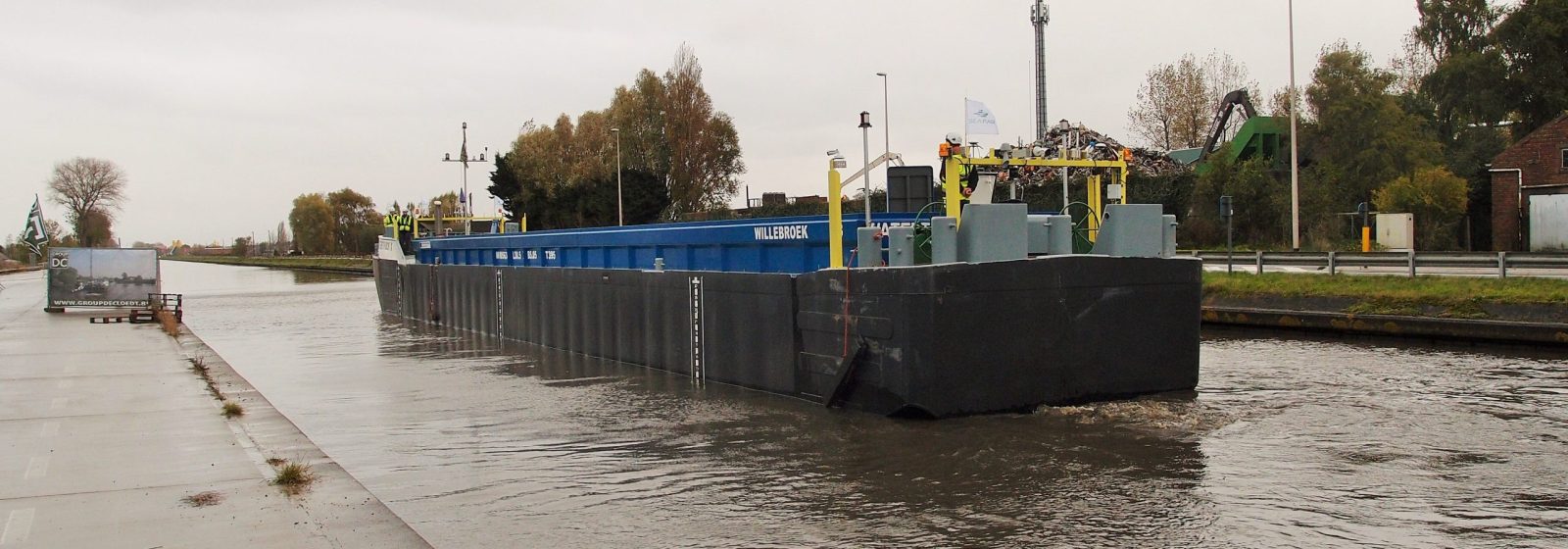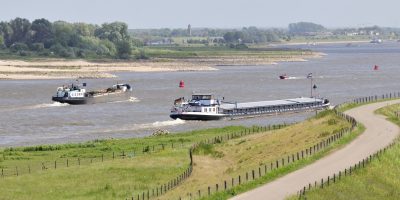
The Flemish Waterway will start dredging the IJzer, Nieuwpoort-Dunkirk Canal and Lo Canal in August. Better navigability of the IJzer basin is a good thing for Group De Cloedt, which operates there with unmanned Watertrucks.
On behalf of De Vlaamse Waterweg, the Ghent Dredging-DEME consortium will start maintenance dredging and silt removal in the IJzer basin after the summer construction holidays. On the IJzer between Roesbrugge and Nieuwpoort, local shallows will be cleared. This will be followed by an investigation for possible explosives or pollution, after which the depth will be brought to a minimum of 2.20 metres everywhere in 2025.
Thresholds will also be flattened on the Nieuwpoort-Dunkirk Canal. The Lo-Canal, which connects the IJzer in Fintele with the Nieuwpoort-Dunkerke Canal, will also be restored to a minimum depth of 2.20 metres along its entire length, with a 6-metre-wide navigation channel.
Flooding of the Westhoek
The works stem from the action plan ‘Resilient Westhoek’, approved by the Flemish government at the end of 2023. This includes numerous interventions by the Flemish and local authorities to – after the severe floods of recent years – increase safety and improve water management.
“We welcome the approach to the Iron Basin,” responded Patrick Degryse, chairman of Group De Cloedt. The company for dredging, transport and processing of sand, aggregates and soils, has been operating in the area since 2019, a traffic with unmanned Watertrucks. From Diksmuide, these will bring a mass of 400,000 tonnes of excavated soil to Ostend for 7 to 8 years. This route will run via the IJzer, the Nieuwpoort-Oostende canal (Plassendalevaart) and a section of the Bruges-Ostend canal.
Boating ban avoided
The most recent problem situation was in November 2023, when Flanders was struggling with high water levels due to huge amounts of precipitation in northern France. This caused disruption to shipping in the Scheldt, Leie, Dender and IJzer basins as far as the inner port of Ostend. “In the IJzer basin, there was even a complete navigation ban for weeks due to the floods. This had a heavy operational and also financial impact on our operation. Besides ongoing costs for equipment and staff, our project to remove soil from Diksmuide was delayed. Fortunately, we were recently granted a contract extension for this, so we will still be able to move all volumes,” says Degryse.
But even for ‘normal conditions’, he thinks the dredging is a good thing. “The capacity of a vessel is determined by the smallest depth on the entire route. If De Vlaamse Waterweg can guarantee the security of at least 2.20 metres on the IJzer, then we can work with that. Let me note, however, that the constant sailing depth of the Nieuwpoort-Plassendale canal also remains a concern.”




